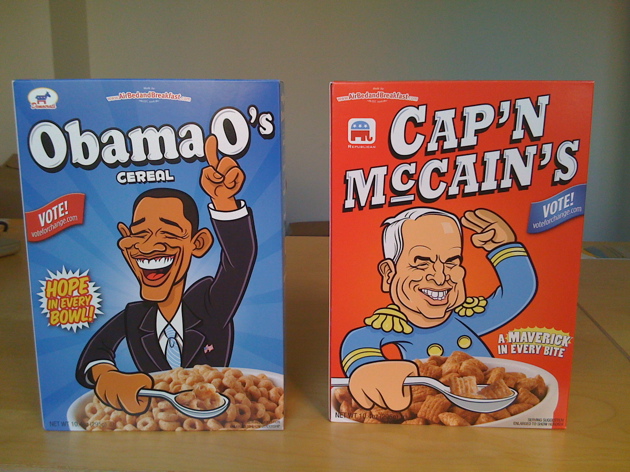If you want to build a billion-dollar company, you have to get your hands burnt with a hot-glue gun.
The year was 2008. During a Y-Combinator interview, Paul Graham dismissed the idea put forth by 3 co-founders and shouted, “People are actually doing this? Why? What’s wrong with them?”.
Earlier that year, those 3 people (let’s call them A, B, and C) ran out of money. Their original startup idea wasn’t running well and they were going into debt. They decided to ship free boxes of cereal - Obama O’s and Cap’n McCain’s to their clients. By that time, A and B both had accumulated $20k credit card debt. They somehow managed to print 500 boxes of each for free and decided to pivot. They re-branded the boxes as collectors’ edition and decided to sell each for $40. After roaming through San Francisco’s supermarkets, they loaded their shopping cart with 1000 boxes of cheapest cereal ($1 each) and brought them home. They got to work - folding the boxes and sealing them with a hot-glue gun. A burned his hands and thought to himself that he couldn’t remember Mark Zuckerberg hot-gluing anything or burning his hands assembling cereal boxes to launch Facebook. After a great hustle, Obama O’s sold out in three days and they both made somewhere between $20,000 and $30,000 selling cereal - much larger than that they earned from the original idea.1

Image Credits : TechCrunch Images
A and B paid off their debt while C moved back to Boston and got engaged. Even after paying debt A and B were struggling, living off dry cereal. Milk was too expensive for the money they had. A had lost around 20 pounds over the course of the year. One night in November 2008, they were having dinner with their adviser - Michael Seibel. He urged them to try Y-Combinator by saying “Look at you! You guys are dying.” Even though the application deadline had passed, he managed to convince Paul Graham to consider the application. They applied, got an interview and convinced C to come to SF. Y-Combinator’s application process was brutal; no presentations allowed and interviews were just ten minutes flat, consisting of Paul Graham and his partners asking rapid-fire questions. After spending many hours prepping, founders were ready to leave for the interview.
And Paul Graham’s reaction after listening to their idea was “People are actually doing this? Why? What’s wrong with them?”. After Graham’s dismissal, founders started to pack their stuff and leave. B walked over to Graham and handed him a box of cereal which he had sneaked into his bag. Founders told Graham the story behind the cereal boxes and how they funded their startup by selling these boxes. They were told to expect a call from Paul Graham if they were selected. On their way back, A received a call from Graham. As he eagerly started to listen, the call dropped. They were on a stretch of I-280 between Silicon Valley and San Francisco where it was well known that there was no cell signal. They frantically drove back to SF. Graham called again, got through and offered them a spot. They accepted as they totally were out of options. They received $20,000 in seed funding that came with admission in the program, in return for 6% stake in the company. C relocated to SF and they all were back at it again. They were given another chance. A new hope.2
The reason Paul Graham was intrigued because of cereal boxes they sold. “If you can convince people to pay forty dollars for a four-dollar box of cereal, you can probably convince people to sleep in other people’s airbeds,” he said. “Maybe you can do it.”3
Those 3 founders were none other than Brian Chesky, Joe Gebbia, and Nathan Blecharczyk. They initially convinced people to buy $4 cereal box for $40 and later convinced them to rent out their apartment to strangers. Fast forward to 2017, Airbnb is projecting that it will earn as much as $3.5 billion a year by 20204.

Leave a comment